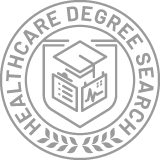Doctor’s Degrees in Naturopathic Medicine/Naturopathy
Education Levels of Naturopathic Medicine/Naturopathy Majors
During the most recent year for which data is available, 254 people earned their doctor's degree in naturopathic medicine/naturopathy. This makes it the 22nd most popular doctor's degree program in the country.
The following table shows the number of diplomas awarded in naturopathic medicine/naturopathy at each degree level.
| Education Level | Number of Grads |
|---|---|
| Doctor’s Degree | 254 |
| Master’s Degree | 12 |
| Graduate Certificate | 6 |
Earnings of Naturopathic Medicine/Naturopathy Majors With Doctor’s Degrees
At this time, we do not have the data to estimate the median earnings for this class of people.
Student Debt
We do not have the data to estimate the median debt for this class of people.
Student Diversity
More women than men pursue their doctor's degree in naturopathic medicine/naturopathy. About 88.6% of graduates with this degree are female.
| Gender | Number of Grads |
|---|---|
| Men | 29 |
| Women | 225 |

The racial-ethnic distribution of naturopathic medicine/naturopathy doctor’s degree students is as follows:
| Race/Ethnicity | Number of Grads |
|---|---|
| Asian | 20 |
| Black or African American | 23 |
| Hispanic or Latino | 35 |
| White | 140 |
| International Students | 7 |
| Other Races/Ethnicities | 29 |

Most Popular Naturopathic Medicine/Naturopathy Programs for Doctor’s Degrees
There are 6 colleges that offer a doctor’s degree in naturopathic medicine/naturopathy. Learn more about the most popular 6 below:
Bastyr University tops the list of the most popular school in the U.S. for naturopathic medicine/naturopathy majors who are seeking their doctor's degree. Roughly 900 attend the school each year. The average in-state tuition for full-time undergraduates is $29,820 per year, while in-state graduate students, on average, pay $29,820 per year. During the most recent year for which we have data, 124 people received their doctor's degree in naturopathic medicine/naturopathy from Bastyr University. Of these students, 87% were women and 36% were members of underrepresented racial-ethnic groups.
Southwest College of Naturopathic Medicine & Health Sciences comes in at #2 on our list of the most popular colleges offering doctor's degrees in naturopathic medicine/naturopathy. Roughly 500 attend the school each year. During the most recent year for which we have data, 65 people received their doctor's degree in naturopathic medicine/naturopathy from SCNM. About 89% of this group were women, and 43% were students from an underrepresented racial-ethnic group.
National University of Natural Medicine comes in at #3 on our list of the most popular colleges offering doctor's degrees in naturopathic medicine/naturopathy. Roughly 400 attend the school each year. The average in-state tuition for full-time undergraduates is $11,658 per year, while in-state graduate students, on average, pay $19,631 per year. During the most recent year for which we have data, 61 people received their doctor's degree in naturopathic medicine/naturopathy from NUNM. Around 18% of these students were from an underrepresented racial-ethnic group, and 92% were women.
The 4th most popular school in the country for naturopathic medicine/naturopathy majors who are seeking their doctor's degree is National University of Health Sciences. Roughly 500 attend the school each year. The average in-state tuition for full-time undergraduates is $22,122 per year, while in-state graduate students, on average, pay $27,801 per year. During the most recent year for which we have data, 35 people received their doctor's degree in naturopathic medicine/naturopathy from National College of Chiropractic. Around 35% of these students were from an underrepresented racial-ethnic group, and 85% were women.
Universidad del Turabo is the 6th most popular school in the nation for students seeking a doctor's degree in naturopathic medicine/naturopathy. The average in-state tuition for full-time undergraduates is $4,920 per year, while in-state graduate students, on average, pay $2,652 per year. During the most recent year for which we have data, 11 people received their doctor's degree in naturopathic medicine/naturopathy from Universidad del Turabo. Around 100% of these students were from an underrepresented racial-ethnic group, and 100% were women.
Explore Major by State
Alabama
Arkansas
Connecticut
Florida
Idaho
Iowa
Louisiana
Massachusetts
Mississippi
Nebraska
New Jersey
North Carolina
Oklahoma
Rhode Island
Tennessee
Vermont
West Virginia
Related Majors
Below are some popular majors that are similar to naturopathic medicine/naturopathy that offer doctor’s degrees.
| Major | Annual Degrees Awarded |
|---|---|
| Acupuncture & Oriental Medicine | 716 |
| Traditional Chinese Medicine | 8 |
References
*The racial-ethnic minority student count is calculated by taking the total number of students and subtracting white students, international students, and students whose race/ethnicity was unknown. This number is then divided by the total number of students at the school to obtain the percentage of racial-ethnic minorities.
- College Factual
- National Center for Education Statistics
- O*NET Online
- Bureau of Labor Statistics
- Image Credit: By Aphiwat chuangchoem under License
More about our data sources and methodologies.




